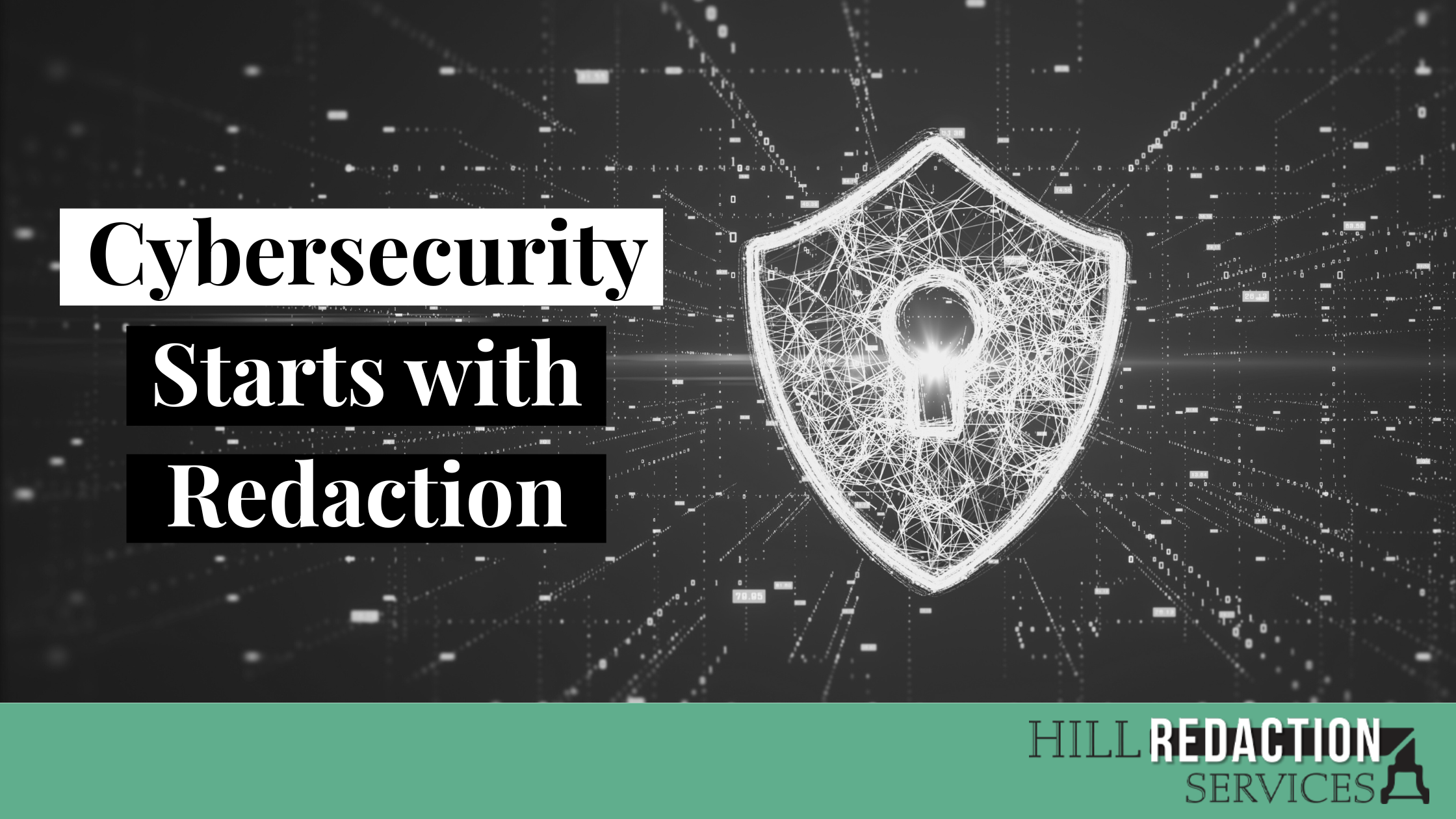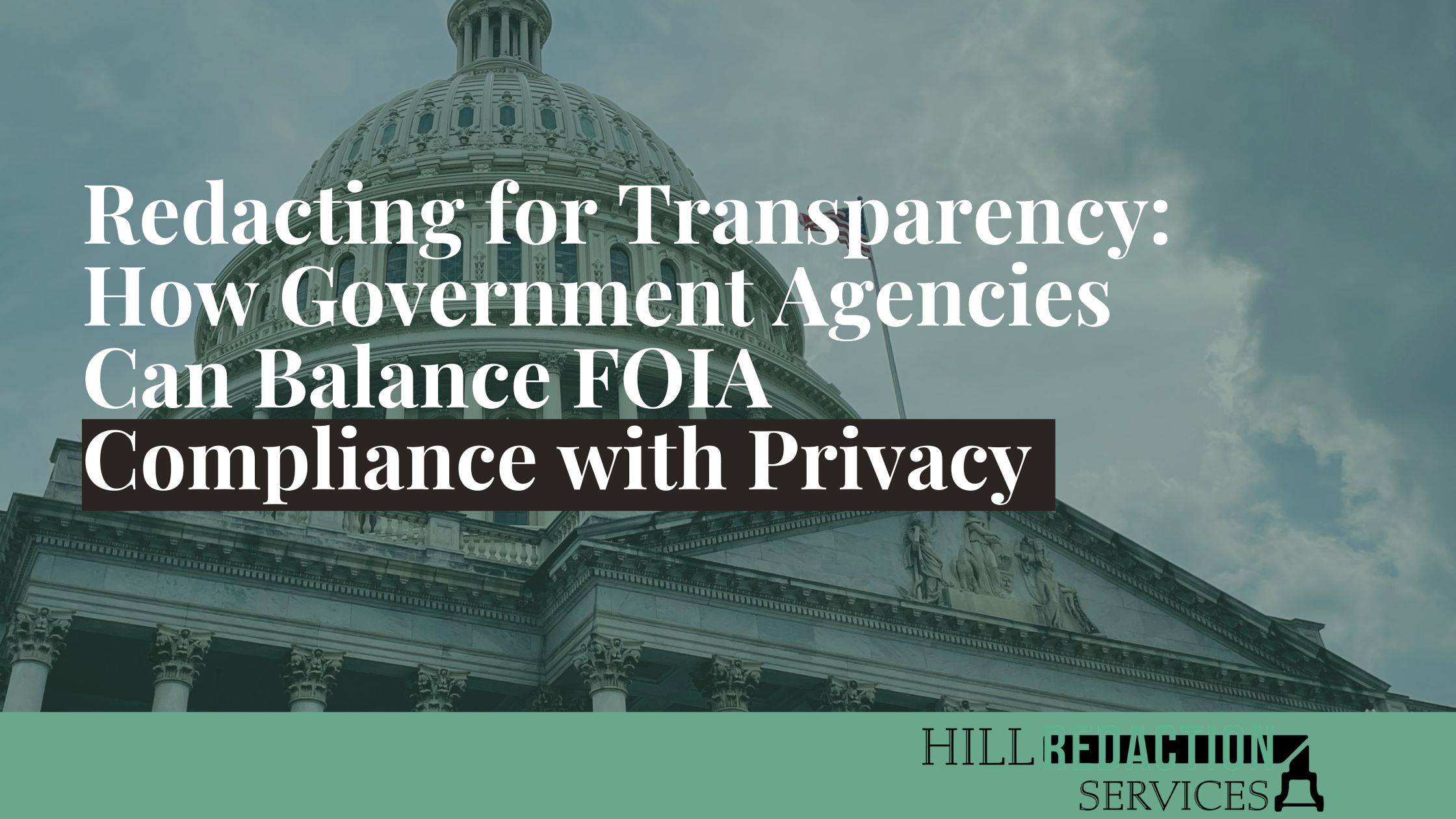
Redaction: The Overlooked Cornerstone of Cybersecurity
October is Cybersecurity Awareness Month, a time when organizations review their defenses against phishing, malware, and insider threats. But one crucial piece of data security often goes overlooked: document redaction.
Why Redaction Matters in Cybersecurity
Strong passwords, firewalls, and encryption all protect against external attacks. Yet, sensitive data often leaks through a much simpler vulnerability -documents shared without proper redaction.
Whether in government, healthcare, financial services, or law, improperly redacted files can expose:
- Personally Identifiable Information (PII) such as Social Security numbers or addresses
- Protected Health Information (PHI) covered by HIPAA
- Financial records subject to GLBA and CFPB
- Privileged legal communications that should never leave the firm
Even a single oversight can trigger regulatory penalties, reputational damage, or costly litigation.
Common Redaction Mistakes That Breach Security
- Black Boxes Without True Removal – Simply covering text in a PDF doesn’t erase it; hidden layers may still reveal sensitive details.
- Metadata Exposure – Document properties can expose names, timestamps, or prior versions.
- Inconsistent Practices – Different teams using different redaction methods create compliance gaps.
- Overlooking Non-Body Text – Headers, footers, and marginal notes often carry sensitive data.
Each of these mistakes undermines cybersecurity by leaving data available to bad actors.
Redaction as Cyber Hygiene
Cybersecurity isn’t only about preventing hacks – it’s about controlling information exposure. Proper redaction ensures sensitive details are truly removed, not just hidden. Think of it as cyber hygiene: just as patching software reduces vulnerabilities, redaction closes compliance gaps.
Building Redaction into Your Cybersecurity Program
To integrate redaction into cybersecurity practices, organizations should:
- Develop a standardized checklist for all departments handling sensitive data
- Use validated redaction methods rather than ad hoc manual techniques
- Train staff on identifying sensitive information under HIPAA, GLBA, FOIA, or other applicable regulations
- Audit regularly to confirm compliance and prevent near-miss redactions
Conclusion
This Cybersecurity Awareness Month, organizations are reminded that defending against cyber risks requires more than technology alone. True data security includes ensuring sensitive information is never exposed in the first place.
At Hill Redaction Services, we help government agencies, clinical trial teams, mortgage servicers, and legal professionals safeguard data through precise, regulation-compliant redaction practices.
Redaction isn’t just a compliance requirement – it’s a cornerstone of modern cybersecurity.
Related Posts

Redaction: The Overlooked Cornerstone of Cybersecurity
October is Cybersecurity Awareness Month, a time when organizations review their defenses against phishing, malware, and insider threats. But one crucial piece of data security often goes overlooked: document redaction.
Why Redaction Matters in Cybersecurity
Strong passwords, firewalls, and encryption all protect against external attacks. Yet, sensitive data often leaks through a much simpler vulnerability -documents shared without proper redaction.
Whether in government, healthcare, financial services, or law, improperly redacted files can expose:
- Personally Identifiable Information (PII) such as Social Security numbers or addresses
- Protected Health Information (PHI) covered by HIPAA
- Financial records subject to GLBA and CFPB
- Privileged legal communications that should never leave the firm
Even a single oversight can trigger regulatory penalties, reputational damage, or costly litigation.
Common Redaction Mistakes That Breach Security
- Black Boxes Without True Removal – Simply covering text in a PDF doesn’t erase it; hidden layers may still reveal sensitive details.
- Metadata Exposure – Document properties can expose names, timestamps, or prior versions.
- Inconsistent Practices – Different teams using different redaction methods create compliance gaps.
- Overlooking Non-Body Text – Headers, footers, and marginal notes often carry sensitive data.
Each of these mistakes undermines cybersecurity by leaving data available to bad actors.
Redaction as Cyber Hygiene
Cybersecurity isn’t only about preventing hacks – it’s about controlling information exposure. Proper redaction ensures sensitive details are truly removed, not just hidden. Think of it as cyber hygiene: just as patching software reduces vulnerabilities, redaction closes compliance gaps.
Building Redaction into Your Cybersecurity Program
To integrate redaction into cybersecurity practices, organizations should:
- Develop a standardized checklist for all departments handling sensitive data
- Use validated redaction methods rather than ad hoc manual techniques
- Train staff on identifying sensitive information under HIPAA, GLBA, FOIA, or other applicable regulations
- Audit regularly to confirm compliance and prevent near-miss redactions
Conclusion
This Cybersecurity Awareness Month, organizations are reminded that defending against cyber risks requires more than technology alone. True data security includes ensuring sensitive information is never exposed in the first place.
At Hill Redaction Services, we help government agencies, clinical trial teams, mortgage servicers, and legal professionals safeguard data through precise, regulation-compliant redaction practices.
Redaction isn’t just a compliance requirement – it’s a cornerstone of modern cybersecurity.






